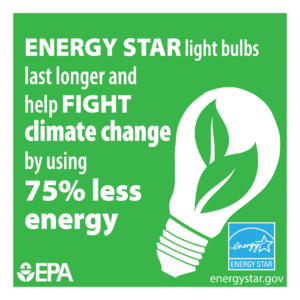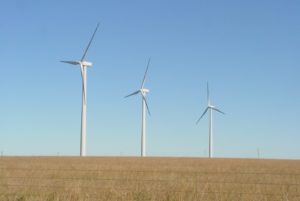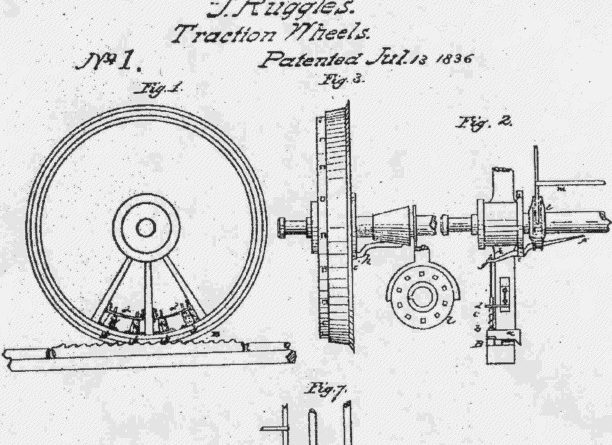Climate Change Champions & Innovations
Photo By ttaulli/CC by 2.0
Anna Gomes| July 14, 2016
On Wednesday, June 29, 2016, a variety of professionals, organizations, and climate change enthusiasts came together at the Carnegie Institution for Science in Washington D.C., to discuss the innovations of the past, present, and future in facing the challenges which climate change presents. This post discusses the main topics covered at the event.
Patents- Protectors of Invention
Innovations lead to inventions, by bringing unique ideas to production. Being the authority behind these inventions, Michelle K. Lee, the Director of the United States Patent and Trademark Office, opened the event with her optimism for facing climate change. Lee conveyed that the science behind our sea level rise, temperature increase, and melting glaciers is purely fact based, “Manmade climate change demonstrates a potential deadly threat to all of us”. By thinking outside of the box as to new ideas involving alternative energy sources, technology, and interdisciplinary intellectuals, possible environmental solutions can be made reality. Lee states: “Patents have played a large role in bolstering the world’s efforts to mitigate climate change, and they will continue to do so”, conveying her passion and persistence of climate innovation.
Energy Efficiency
Following Lee’s keynote address, four panelists took the stage to discuss past inventions and current projects that they see as tools to combat environmental issues. A variety of topics were discussed from energy to patents to politics. Beginning with Dr. B. Jayant Baliga, Director of the Power Semiconductor Research Center and creator of the Insulated Gate Bipolar Transistor (IGBT), portraying his enthusiasm for energy efficiency and savings through clever technologies. As the inventor of the IGBT, Dr. Baliga’s efforts have caused a CO2 reduction of 35 trillion pounds in the United States and 78 trillion pounds worldwide in the past twenty years alone. Used in a variety of sectors, the IGBT is efficient in electric vehicles for delivery and control of power to the motors. In considering renewable energy, Dr. Baliga’s device is also used for conversion of solar and wind into electric power. This invention has earned Dr. Baliga multiple awards and honors, placing him into the National Inventors Hall of Fame as a 2016 inductee.
 He also mentioned two other climate innovations, the CFL light bulbs and variable motor drives. Both energy efficient products, which have been saving electricity and spreading throughout markets. To start, CFL light bulbs use 70% less energy than incandescent bulbs. How do CFLs work? An electric current travels through a tube containing Argon and a bit of Mercury vapor. This generates invisible ultraviolet light, which further excites a fluorescent coating, or phosphor, creating visible light and powering the CFL light bulb. What is limiting the widespread use of these ‘smarter’ light bulbs? Some claim this is due to the time the bulbs take to reach full capacity, in addition to the higher prices consumers pay. Even more energy efficient, and fully supported by Dr. Baliga, are LED light bulbs, which use at least seventy-five percent less energy than incandescent bulbs, are more durable, and last longer. Unfortunately, LED bulbs are even more expensive than CFLs, but can be good investments when one considers bulb life expectancy in calculating long-term consumer costs. Yet another example of a climate innovation which merely needs the policies and financing to make practical. Is it possible that a new light bulb could use even less energy than LEDs?
He also mentioned two other climate innovations, the CFL light bulbs and variable motor drives. Both energy efficient products, which have been saving electricity and spreading throughout markets. To start, CFL light bulbs use 70% less energy than incandescent bulbs. How do CFLs work? An electric current travels through a tube containing Argon and a bit of Mercury vapor. This generates invisible ultraviolet light, which further excites a fluorescent coating, or phosphor, creating visible light and powering the CFL light bulb. What is limiting the widespread use of these ‘smarter’ light bulbs? Some claim this is due to the time the bulbs take to reach full capacity, in addition to the higher prices consumers pay. Even more energy efficient, and fully supported by Dr. Baliga, are LED light bulbs, which use at least seventy-five percent less energy than incandescent bulbs, are more durable, and last longer. Unfortunately, LED bulbs are even more expensive than CFLs, but can be good investments when one considers bulb life expectancy in calculating long-term consumer costs. Yet another example of a climate innovation which merely needs the policies and financing to make practical. Is it possible that a new light bulb could use even less energy than LEDs?
Besides the classic light bulb example, and turning to motor efficiency, variable frequency motor drives currently monitor and precisely analyze energy use. These efficiency machines use only the energy required rather than having a motor run at a fixed speed, utilizing less energy in conducting the same amount of work. According to Dr. Baliga, only about fifty percent of motors in the United States are using the variable motor drives due to their costly nature. However, these variable motors are much more common in Europe.
Renewable Energy
The second and equally successful National Inventors Hall of Fame member, Dr. Johnson, past Under Secretary of Energy at the United States Department of Energy and current President of Cube Hydropower, put her own twist on climate innovation. Her work in hydropower systems involves taking entire ecosystems into account while simultaneously creating renewable energy. Dr. Johnson sees the future of climate friendly energy systems as an intermixed system of different renewable energies to fill the gap for the absence of coal powered power plants.
Currently, the electricity grid is not renewable energy friendly or a continuous robust system across states. Here, at the Climate Institute, one of our current ‘Innovative Solutions Initiatives’ involves creating a nation-wide underground electricity grid which is both resilient and reliant. A main aspect to this project includes connecting wind and solar renewable energy to the grid, slowly easing carbon emission energy sources out of the grid altogether.
Go Big or Go Home
Besides the scientists, engineers, and economists, large corporations play a critical role in climate change mitigation. Holding a position of power not only financially, but also in consumer markets, corporations sometimes take action and set examples to illustrate their part in the matter. One company for example, HP, is setting sustainability targets and goals while recognizing the issue of their business in an environmental context. “Climate change is the most challenging environmental issue of our lifetime,” said Nate Hurst, HP’s Chief Sustainability & Social Impact Officer. “HP is committed to being an environmental steward; therefore, we continue to measure and reduce the impact of our products, operations and supply chain activities.” Included in HP’s latest Sustainability Report released June 29, 2016, a one-hundred percent zero deforestation by 2020 target means that “All HP brand paper and paper-based product packaging 1will be derived from certified and recycled sources by 2020, with a preference for virgin fiber from certified sources of the Forest Stewardship Council (FSC).” Also available at hp.com, both a carbon and water footprint graphic portraying the decrease each year in overall footprint by the large corporation. By companies worldwide stepping up and taking responsibility for emissions, this creates a sustainability competition which consumers look to when purchasing. Do you research the environmental sustainability of companies you invest in or purchase from?
While at the “Innovation to Power the Nation, Reinventing our Climate Future” panel and discussion, Nate Hurst from HP portrayed his excitement for the 3D printer, as Hp recently released the HP Jet Fusion 3D Printer for customer use. These printers produce functional parts with extreme dimensional accuracy while reducing the need for massive storage of parts in warehouses. If one can simply print parts as needed, this would change the way that materials are used, stored, and disposed.
Pricing Carbon
Bob Perciasepe, former Deputy Administrator of the United States EPA and current President of the Center for Climate and Energy Solutions (C2ES), theorized that policies which stimulate innovation and creativity are key to turning climate smart solutions into practicality. With government supported incentives for cleaner technologies, more efficient energy, and entrepreneurial research, products and services with smaller environmental impacts can be the economical options. Alternatively, making business more expensive to emit GHGs by executing programs such as carbon cap and trade, or pricing carbon per ton emitted, this may also stimulate innovation when considering energy source and use.
Policies

Discussed by all four panelists on June 29, 2016, and taking place simultaneously with the Carnegie event, the leaders of North America at the North American Leaders Summit in Ottawa, Canada, were bringing the policies of climate change to the fore-front. A pact between the United States, Canada, and Mexico claims a goal to reach 50 percent of electricity coming from renewable energy sources by 2025. Dr. Johnson, one of the panelists, mentioned that this target is possible due to the current renewable energy already being created throughout North America. Hydropower in Canada, geothermal power in Mexico, and nuclear power in the United States. Besides the 50 percent target, the leaders also committed to cutting down GHG and air pollutant emissions from vehicles, as this continues to be a major problem worldwide. As this agreement unfolds into action, innovative thinking and collaboration between all sectors will be necessary to meet the 50 percent reduction.
What to do?
How can we adapt to the effects directly or indirectly caused by climate change? How can we lessen the amounts of GHGs currently in our atmosphere while simultaneously slowing the creation of those gases from their creation? Some organizations, researchers, and entrepreneurs are already starting a list of ideas, thoughts, suggestions, and discussion brainstorming for climate innovations. One example is using carbon to make plastic for vehicle parts– talk about the ultimate recycle circle.
What about making Earth a better carbon sink through soil sequestration? It is difficult to store, reuse, and mitigate fossil fuel emissions. We need to find ways to use the carbon emissions from factories, transportation, etc. Besides storing the carbon that is produced by fossil fuels, how can we find ways to productively use the carbon to create or run some process or product? From researching studies which have been and are currently being conducted, not much focus has been set aside for the possibility of options besides carbon capture and storage (CCS). While many companies do not have sufficient funds to invest in the environmentally friendly choice, CCS can double construction costs for a power plant.

Even if we are becoming more efficient in all sectors of energy use, we still need to use less and be more creative with the current resources we have already produced. It can become a hard concept due to the individual drive to collect more, buy more, and do more. Mr. Perciasepe, the President of C2ES, believes that Americans don’t pay enough for our energy. Dr. Johnson, Co-founder of Cube Hydropower, pointed out that renewable energy can be cost competitive when compared to the real costs of carbon pollution.
Consumer education can play a major role in answering the “what to do” questions. By switching to CFL light bulbs, or even unplugging appliances, chargers, etc. when not in use, since these ‘vampire energies’ use energy even when not operating.
International Examples of Innovation

One standout innovative product created to reduce energy poverty, provide entrepreneurship, and increase the safety of daily life for many is the solar powered light by Solar Sister. About the size of a standard camping lantern, the solar lights are self-sustaining solutions for many in Sub-Saharan Africa. By having about four more hours of sunlight per day, family members can work or study for longer, in addition to staying safer when leaving the home to collect firewood, water, or simply traveling to and from work. Solar Sisters has been working hard to empower women as the retail saleswomen within Africa, while encouraging them to become financially independent.
Cooking should be safe, enjoyable, and a healthy task which brings families and communities together. Focusing on eight key countries, including Ghana, India and Kenya, the Global Alliance for Clean Cookstoves is a public-private partnership, global initiative, hosted by the United Nations Foundation. By creating clean and efficient household cooking stoves for sale, these products are revolutionizing the standards of living. Besides the avoidance of health problems caused by smoke, the clean stoves are saving men and women time spent collecting the firewood, and therefore reducing the cases of sexual harassment experienced throughout the world.
The clean cookstoves reduces GHG emissions, using less fuel more efficiently. Way to go climate innovators!
Conclusions:
Mr. Perciasepe, one of the panelists, discussed a few times the need for innovative renewable, and environmentally clean practices to become affordable and economically possible. This may be the key to mitigating the effects of climate change, tying together the scientific research with policies and financing to support them.
Innovation will be helpful to reach Paris Agreement goals. By combining climate change with entrepreneurship, we can get creative together and brainstorm ways to make our footprint smaller. There are endless examples of current and projected ideas, designs, and patent applications with which could and have been saving energy, materials, and species. Director of the United States Patent and Trademark Office, Michelle K. Lee states: “As new energy sources have made their way into our lives, innovative entrepreneurs have found ways to make use of those sources. They’ve launched businesses, they’ve created jobs, they’ve grown the economy. And, they’ve improved our standard of living.” What can you design which uses less space, is affordable, and environmentally friendly which can create energy or recycle current GHGs into useable materials? Hit the sketch pad or laboratory and get visionary!

